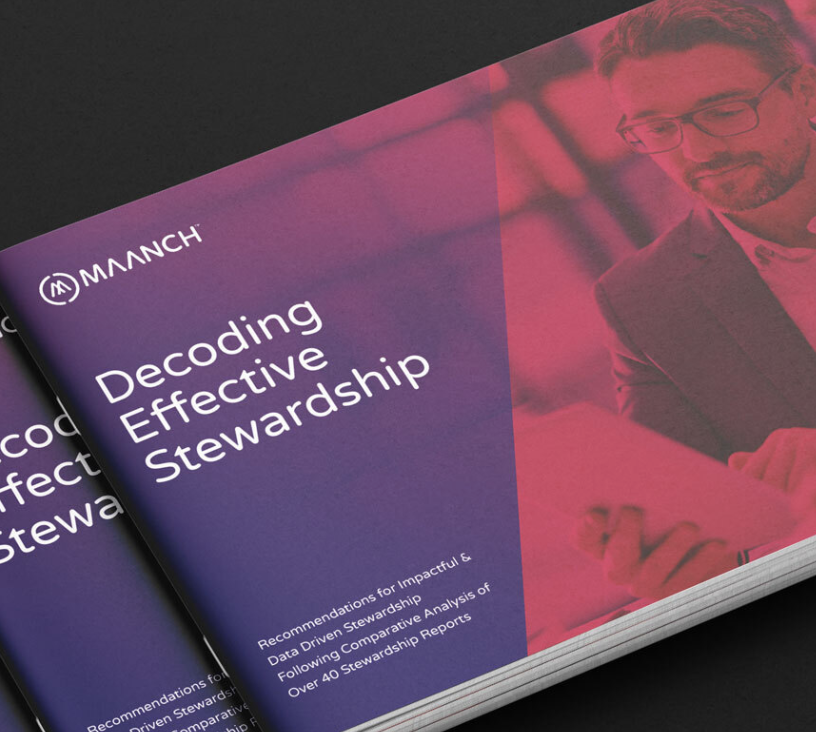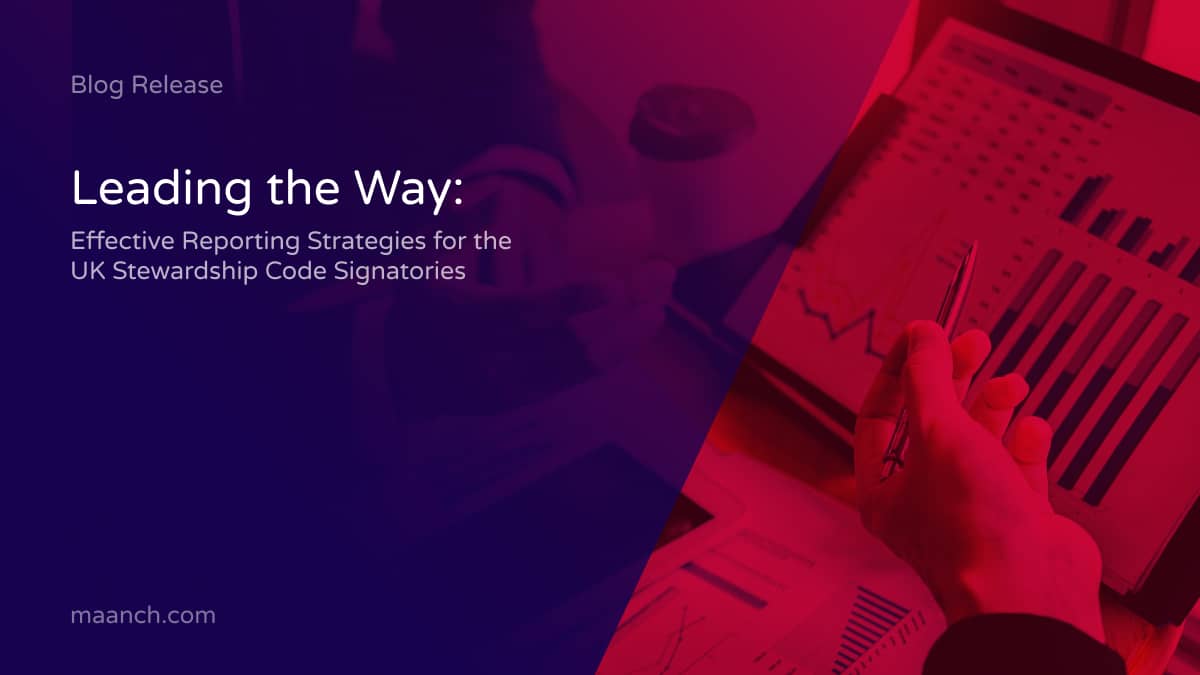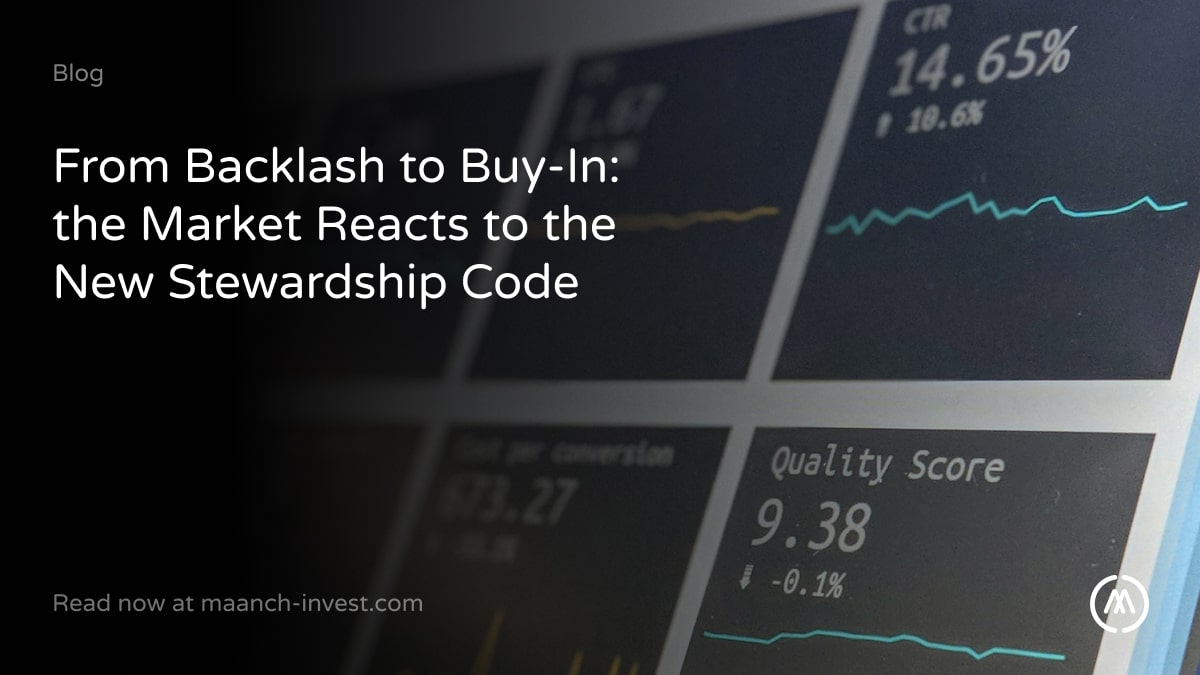As we venture into 2024, the emphasis on stewardship within asset management continues to sharpen, underscored by the UK Stewardship Code’s pivotal role. This guide equips asset managers, asset owners, and their service providers with the knowledge to craft a compelling stewardship report in 2024. Key points from the Financial Reporting Council (FRC) advice are summarised below.
Key Guidance for Stewardship Reporting:
- Showcase Your Approach:
Use your stewardship report as a canvas to illustrate your unique approach and the specific actions taken throughout the year. Remember, the Code values diversity in stewardship practices, allowing for flexibility in how you apply its principles. Clearly explain your philosophy and actions while adhering to the “apply and explain” principle. Don’t just meet criteria, demonstrate your commitment. - Quality over Quantity:
Focus on insightful details that address the Code’s principles. Acknowledge both successes and challenges for a balanced perspective. Aim to thoroughly address the underlying principles.
- Transparency is Key:
Clearly define any unique stewardship terms used within your organisation for better reader understanding. Explain specific engagement processes or metrics. High-quality reporting transcends mere compliance.
Demonstrating Stewardship in Action:
The Code’s principles cover the entire investment lifecycle. Your report should show how you applied them across various activities:
- Investment Research: How do you integrate ESG considerations into your research process?
- Investment Decisions: Do you consider a company’s ESG practices alongside financial factors?
- Portfolio Monitoring: How do you track your investee companies’ ESG performance?
- Engagement with Investee Companies: Describe your approach to engagement on ESG issues.
- Escalation Procedures: Outline your process for escalating concerns if engagement is unproductive.
- Voting Rights: How do you approach proxy voting on ESG resolutions?
Best Practices for Stewardship Reporting:
- Proportionate Reporting:
Tailor the level of detail to different asset classes within your AUM. For example, private equity may require a different approach than publicly traded companies. - Case Studies as Proof:
Illustrate your stewardship approach with concrete case studies that showcase outcomes. Include a variety of studies, including ongoing engagements and longer-term goals. Highlighting challenges demonstrates your proactive approach. Ensure these case studies reflect the diversity and scope of your asset management practices. - Distinguish Engagement and Monitoring:
Clearly differentiate these activities within your report to avoid confusion. Monitoring is ongoing tracking, while engagement involves a more proactive dialogue with the company. - Reporting on Indirect Investments:
If you invest through third-party managers, ensure your report reflects this approach proportionately. Outline how you hold these managers accountable for integrating stewardship practices. - Year-on-Year Progress:
Demonstrate how your stewardship efforts have evolved over time. Highlight next steps in ongoing engagements and showcase how your approach is maturing. Use your report to document both the journey and the advancements in your stewardship practices. - Focus on Stakeholders:
Your report should not only comply with the Code but also be informative for stakeholders like clients and beneficiaries. Avoid technical jargon and maintain a professional tone. Consider your audience and tailor the report accordingly. - Clarity and Concision:
Strive for a clear and concise report. Utilise cross-referencing to minimise repetition and maintain a reasonable length. Bullet points, tables, and charts can enhance clarity.
Ensuring Fair, Balanced, and Understandable Reporting:
Principle 5 of the Code challenges signatories to reflect on the fairness, balance, and clarity of their reporting. Embrace this mindset to create reports that are not only comprehensive but also genuinely reflective of your stewardship over the year. Incorporating both quantitative and qualitative data, supplemented by insightful case studies, can significantly elevate the quality of your disclosures.
As the FRC gears up to refine the UK Stewardship Code, this moment serves as a crucial juncture for signatories and applicants alike to reassess and enrich their stewardship strategies. By aligning closely with the Code’s principles and leveraging the forthcoming guidance, organisations can effectively demonstrate their commitment to transparency, accountability, and sustained value creation for all stakeholders.
A Deeper Dive : Decoding Effective Stewardship:
Through an analysis of more than 40 stewardship reports, this white paper underscores the importance of incorporating forward-looking metrics, technology and industry-recognised frameworks to enhance transparency and accountability. This research sheds light on the need for asset managers to improve their disclosure of engagement data and monitoring of stewardship in the investment lifecycle, in line with the surging regulatory and industry standards.

Leveraging Technology for Stewardship:
By leveraging award winning tools like the Maanch Engagement Tracker, you can streamline the stewardship data capture and reporting process. This can deliver operational efficiency, mitigate risks, create competitive advantage by leveraging enhanced insights from your organisations Stewardship Data. This allows you to craft a high-quality document with confidence and effectively communicate your organisation’s commitment to responsible investing.
Our platform empowers you to:
- Effortlessly track and analyse portfolio engagements
- Enhance organisation-wide collaboration and transparency
- Extract customisable report in real-time
Looking Ahead to 2024 with the UK Stewardship Code
The FRC plans to revisit the Stewardship Code this year, promising a consultative review later on. Meanwhile, the 2020 Code remains in full effect, with all established reporting expectations still relevant. For current signatories, this means adhering to the usual annual report submissions within the 2024 deadlines.
An updated Code, once published, will introduce a clear path to implementation, ensuring all signatories have ample time to adapt to any new changes. This forthcoming period presents a unique opportunity for engaging with the broader market community to refine and enhance stewardship practices further.




